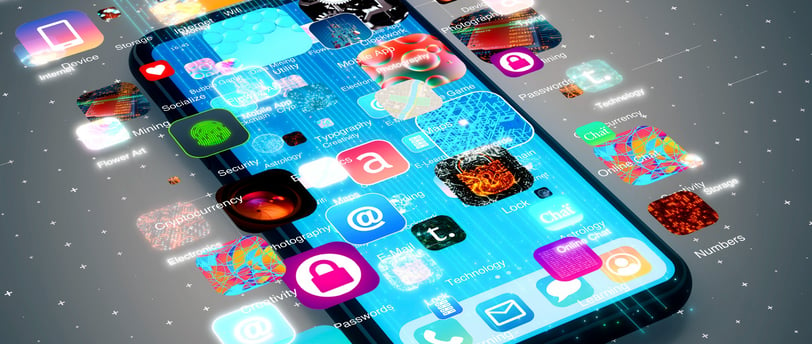The Evolution and Impact of Smartphones
APPS & SOFTWARETECH NEWSFUTURE TECH


A Brief History of Smartphones
The concept of a smartphone began with the desire to merge the functionalities of a mobile phone with the capabilities of a personal digital assistant (PDA). The first device that could be considered a smartphone was IBM's Simon Personal Communicator, released in 1994. It had a touchscreen, could send emails and faxes, and included calendar and address book functions. However, it was not until the 2000s that smartphones started gaining widespread popularity.
The launch of the iPhone in 2007 by Apple marked a turning point in smartphone history. The iPhone's sleek design, user-friendly interface, and the introduction of the App Store transformed the smartphone from a business tool into a must-have consumer device. Following Apple's success, other companies like Samsung, Google, and Huawei quickly entered the market, leading to the rapid expansion and diversification of smartphone technology.
Key Features of Modern Smartphones
Today, smartphones are much more than just communication devices. They have become indispensable tools for entertainment, productivity, and social interaction. Some of the key features of modern smartphones include:
Touchscreen Interfaces: Almost all smartphones today feature large, high-resolution touchscreens that allow users to interact with their devices through taps, swipes, and gestures.
Operating Systems: The two dominant operating systems, iOS and Android, power the vast majority of smartphones. These operating systems provide the backbone for app functionality, user interfaces, and security features.
Apps and Ecosystems: Smartphones are integrated with app stores where users can download and install applications for various purposes, including gaming, social networking, productivity, health, and more. These apps extend the functionality of smartphones and are integral to the smartphone experience.
Cameras: High-quality cameras have become a staple of modern smartphones, often surpassing the capabilities of standalone digital cameras. These cameras enable users to capture photos, record videos, and even engage in augmented reality experiences.
Connectivity: Smartphones support various connectivity options, including 4G, 5G, Wi-Fi, Bluetooth, and NFC, allowing users to stay connected to the internet and other devices at all times.
Artificial Intelligence (AI): Many smartphones now incorporate AI for tasks like voice recognition, image processing, and predictive text input. AI-powered virtual assistants like Siri, Google Assistant, and Alexa have also become integral to the smartphone experience.
The Impact of Smartphones on Society
Smartphones have had a profound impact on virtually every aspect of modern life. Their influence extends beyond communication, affecting education, business, entertainment, and even social norms.
Communication: Smartphones have made communication instantaneous and global. Messaging apps, social media platforms, and video calling services have replaced traditional forms of communication like letters and landline calls. This has made it easier for people to stay connected, regardless of geographical distance.
Business and Productivity: Smartphones have transformed the way businesses operate. They enable remote work, online transactions, and real-time communication, making business operations more efficient. Mobile apps for productivity, such as document editing, project management, and email, allow professionals to work on the go.
Entertainment: The smartphone has become a portable entertainment hub. Streaming services, mobile games, and social media platforms provide endless entertainment options. Smartphones have also revolutionized the music and video industries, with apps like Spotify and YouTube becoming primary sources of content consumption.
Education: Smartphones have made learning more accessible. Educational apps, online courses, and e-books allow students to study anytime and anywhere. During the COVID-19 pandemic, smartphones played a crucial role in enabling remote learning, ensuring that education continued even when schools were closed.
Social Dynamics: The pervasive use of smartphones has also reshaped social interactions. While smartphones have made it easier to stay connected, they have also led to concerns about decreased face-to-face interactions, social isolation, and the impact on mental health. Additionally, the rise of social media has brought about issues related to privacy, cyberbullying, and the spread of misinformation.
Health and Fitness: Smartphones have become valuable tools for health and fitness. Apps that track physical activity, monitor sleep patterns, and provide guided workouts are popular among users. Telemedicine apps have also made it easier for people to consult with healthcare professionals remotely.
Challenges and Future Trends
While smartphones have brought numerous benefits, they also present challenges. Issues like data privacy, screen addiction, and environmental concerns related to e-waste are significant. Moreover, the rapid pace of technological advancement means that smartphones are constantly being upgraded, leading to a culture of consumerism and planned obsolescence.
Looking ahead, the future of smartphones is likely to be shaped by emerging technologies like foldable displays, 5G connectivity, and augmented reality. AI and machine learning will continue to enhance smartphone capabilities, making them more personalized and efficient. The integration of smartphones with other smart devices, such as wearables and home automation systems, will further expand their role in our daily lives.
Conclusion
Smartphones have become an indispensable part of modern life, influencing the way we communicate, work, learn, and entertain ourselves. As they continue to evolve, they will undoubtedly bring new opportunities and challenges. The key to navigating this ever-changing landscape lies in balancing the benefits of smartphones with mindful usage, ensuring that technology enhances our lives without dominating them.


